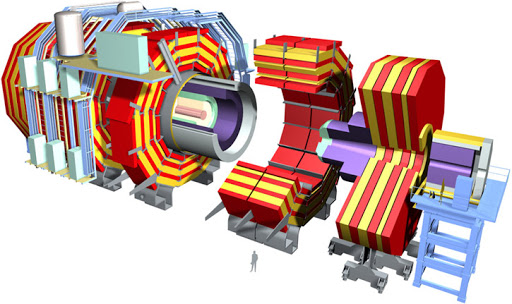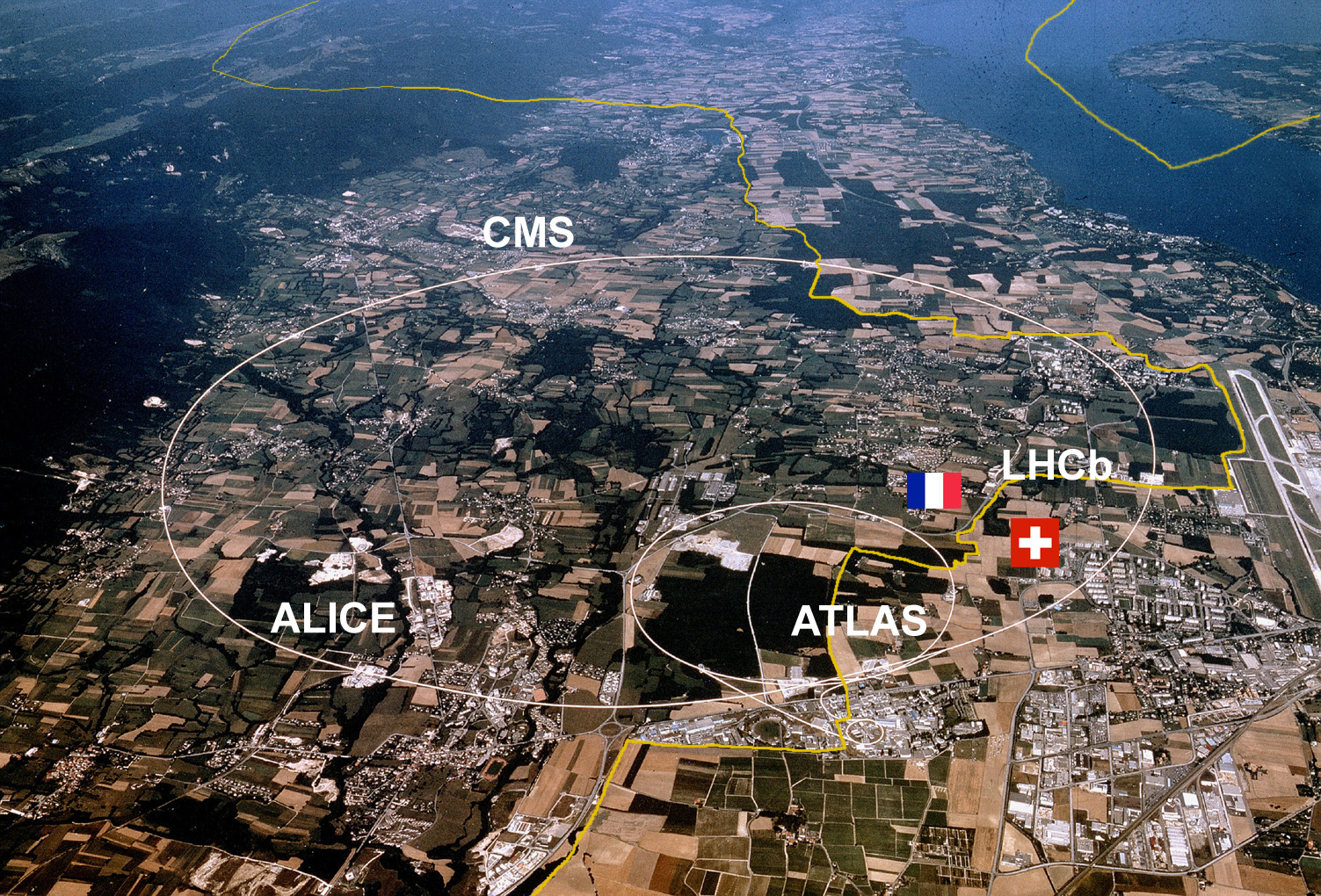The CMS (Compact Muon Solenoid) detector is one of four experiments on the LHC (Large Hadron Collider). The LHC is a circular ring of electromagnets that is 26.7km (17 miles) long and 100 meters (300 feet) underground. The ring contains two beampipes nested inside superconducting magnets that cross at four points, one being inside the CMS detector. Inside the beampipes are thousands of 30-cm-long “bunches” of protons and in one beampipe the protons go clockwise and in the other they go counterclockwise. When the protons collide at the points where the beams cross they are turned into pure energy and will create hadrons, electrons, photons, muons and other matter.

The CMS detector is 21 meters long, 15 meters wide, and 15 meters high. The detector is built around a solenoid magnet, a cylindrical coil of superconducting cable. The CMS detector is designed in layers, each section measures one type of energy so as to take a “snapshot” of the results of the proton-proton collision. The Muon system measures muons after the collisions. The Tracker is made of silicon and charts their positions while they move in the detector, this lets us track their momentum. Outside the tracker are calorimeters that measure the energy of particles. The Hadronic Calorimeter (HCAL) measures hadrons. The Electromagnetic Calorimeter (ECAL) allows the precise measurement of photons and electrons. The calorimeters are designed to stop the particles while sampling their energy whereas the tracker interferes with the particles as little as possible.

The goals of the CMS detector produce pure energy and watch how it evolves
in hopes to understand how the universe works. They are also looking at what the
universe is made of, what forces act within it, and what gives everything substance.
The University of Iowa’s role in this experiment has been working on the design,
construction, and commissioning of the HCAL subsystem, specifically the Hadronic
Forward (HF) calorimeter.
